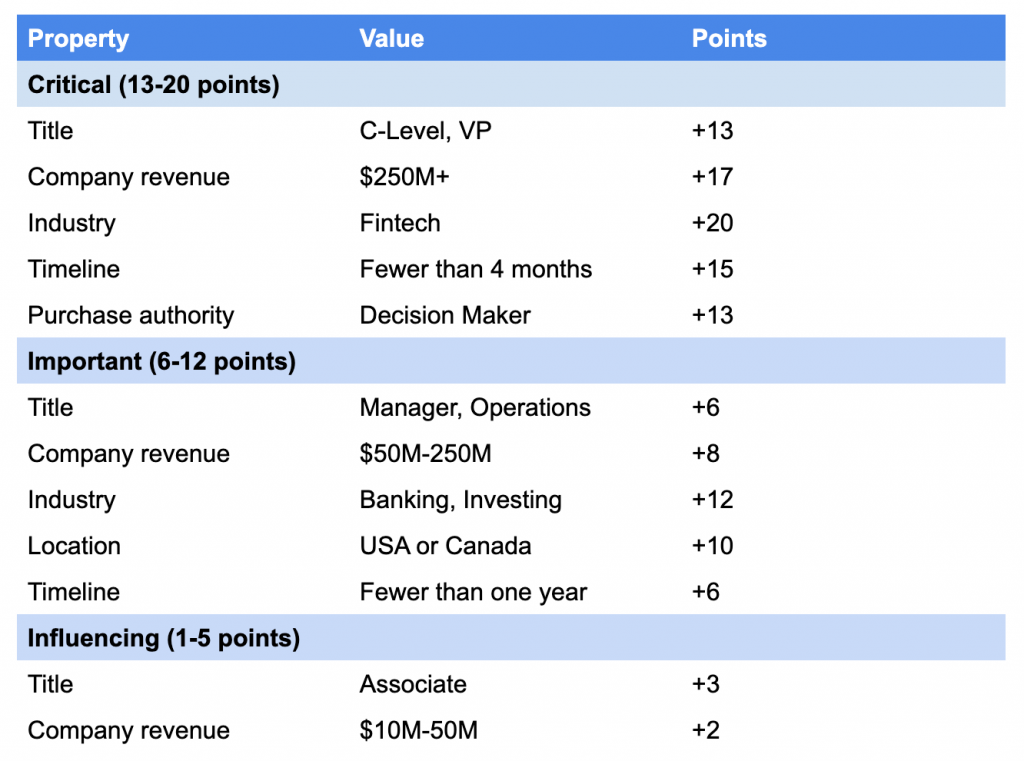What Is Lead Scoring & Why Should You Do It?

Lead scoring allows you to qualify and channel your focus on leads that matter. Find out why you should do it and how you can get started.
Marketers often have one main goal and that is to generate leads for their business. But the main challenge for marketers is to address the issue: not all leads convert into paying customers.
How do you spot the leads that are most likely to become customers? Why is it important to qualify these leads? In this article, you’ll learn what lead scoring is and why you should do it.
What is Lead Scoring
Lead scoring is the process of giving valuation (or scoring) to leads based on their sales-readiness. Companies often have criteria to work with, and lead scoring uses those criteria to “score” these leads. The higher the score is, the more “sales-ready” the lead is.
The lead scoring system allows you to become objective when it comes to qualifying leads. It also makes the process of lead conversion easier— by categorizing leads based on their scores.
Why Lead Scoring is Important
Lead scoring has several benefits for businesses. These include:
- It lets you know where the leads are in the sales funnel
Scoring leads allows you to determine their “sales readiness” and apply strategies that are optimized and suitable to whatever stage of the sales funnel the lead is in. - It lets you prioritize and win important leads before your competitors do
Lead scoring lets you know “high-priority” leads, which allows you to take action immediately and win them before your competitors do. - It lets you maximize your resources
With automated lead scoring, you can implement efforts that are designed based on the leads’ scores, increasing your chances of winning the prospective customer. This allows you to maximize your efficiency, channeling your resources into leads that matter.
How to Get Started with Lead Scoring
To start with lead scoring, here are some tips to consider:
1. Identify your business objective
Understanding your business objective allows you to determine what steps to take when implementing a strategy. It also allows you to score leads accordingly. For example, if your objective is to generate leads primarily through your website, then you must score leads that are coming from your website higher than other marketing channels.
2. Set up your criteria
After identifying your objectives, set up your criteria. What must the lead do to make him sales-ready? Which channel should they use? For example, downloading a lead magnet may make a lead sales worthy, increasing his score by 10. If the lead also subscribes to the company newsletter, this increases his score by 5.
3. Score leads based on criteria
Your criteria must be able to carefully assess the chances of a lead converting. Below is an example of lead scoring:

4. Prepare a lead conversion strategy based on leads’ scores
You can prepare an email, content, or a free demo— anything that allows you to respond according to a lead’s score. Leads that have lower scores may require a general approach, while leads with higher scores may require a more personalized approach.
5. Assess your strategy
Carefully assess your strategy’s strengths and weaknesses. Find out which one’s working and which isn’t. Test some changes based on your findings.
Automate Your Lead Scoring Now
For an effortless lead scoring strategy, automate your lead scoring task using Saphyte. Saphyte can automatically score your leads based on the criteria you set, so your sales and marketing teams won’t have to do it manually.
Our software can also implement automated workflows (like drip email marketing campaigns) and send content automatically based on the lead’s score. If you want to learn more about this, book a free demo with us now.
Curious how digital ecosystems can help improve your business?
Check out how digital ecosystems can boost your company performance by getting started here.
Book a Demo